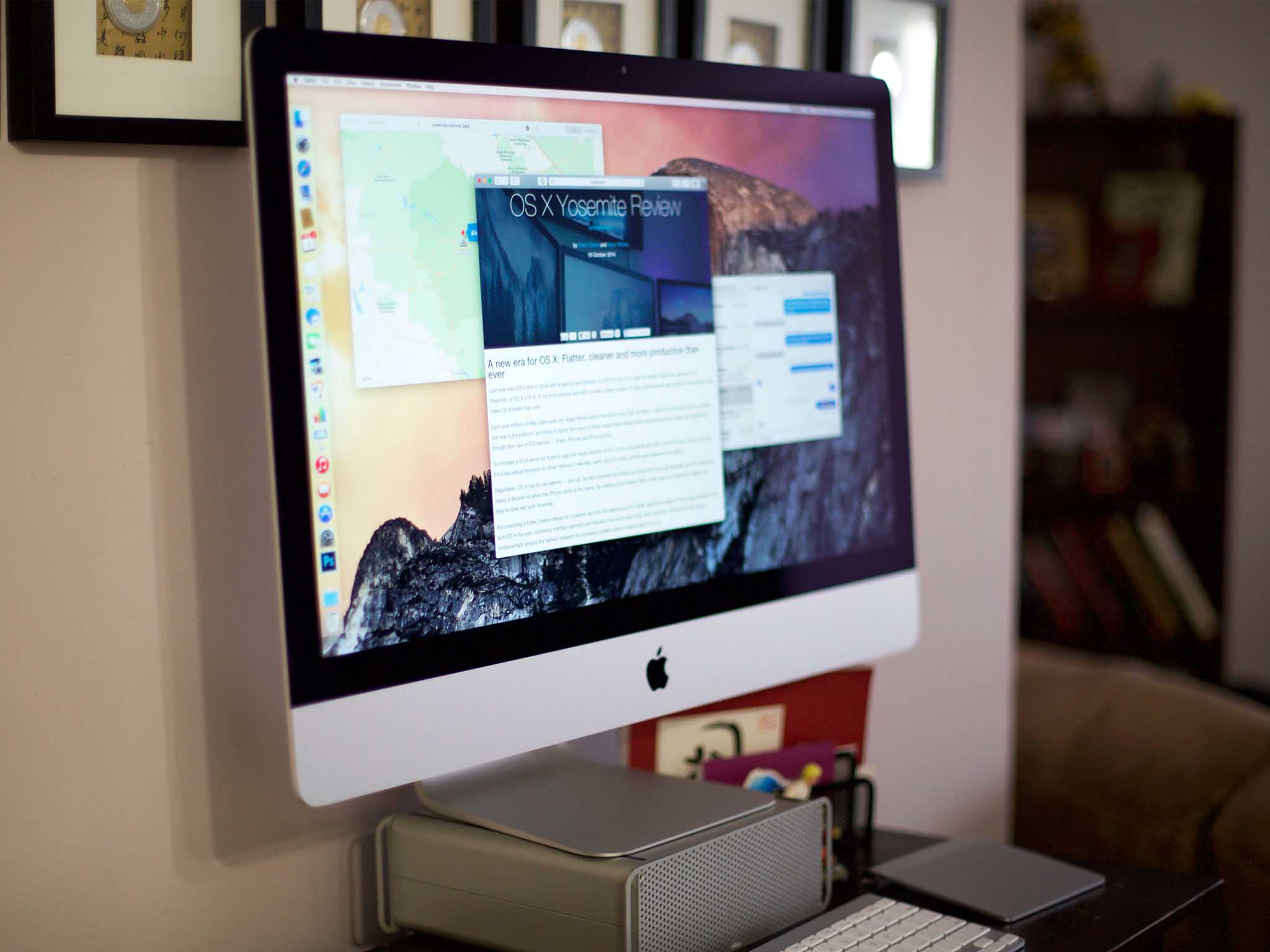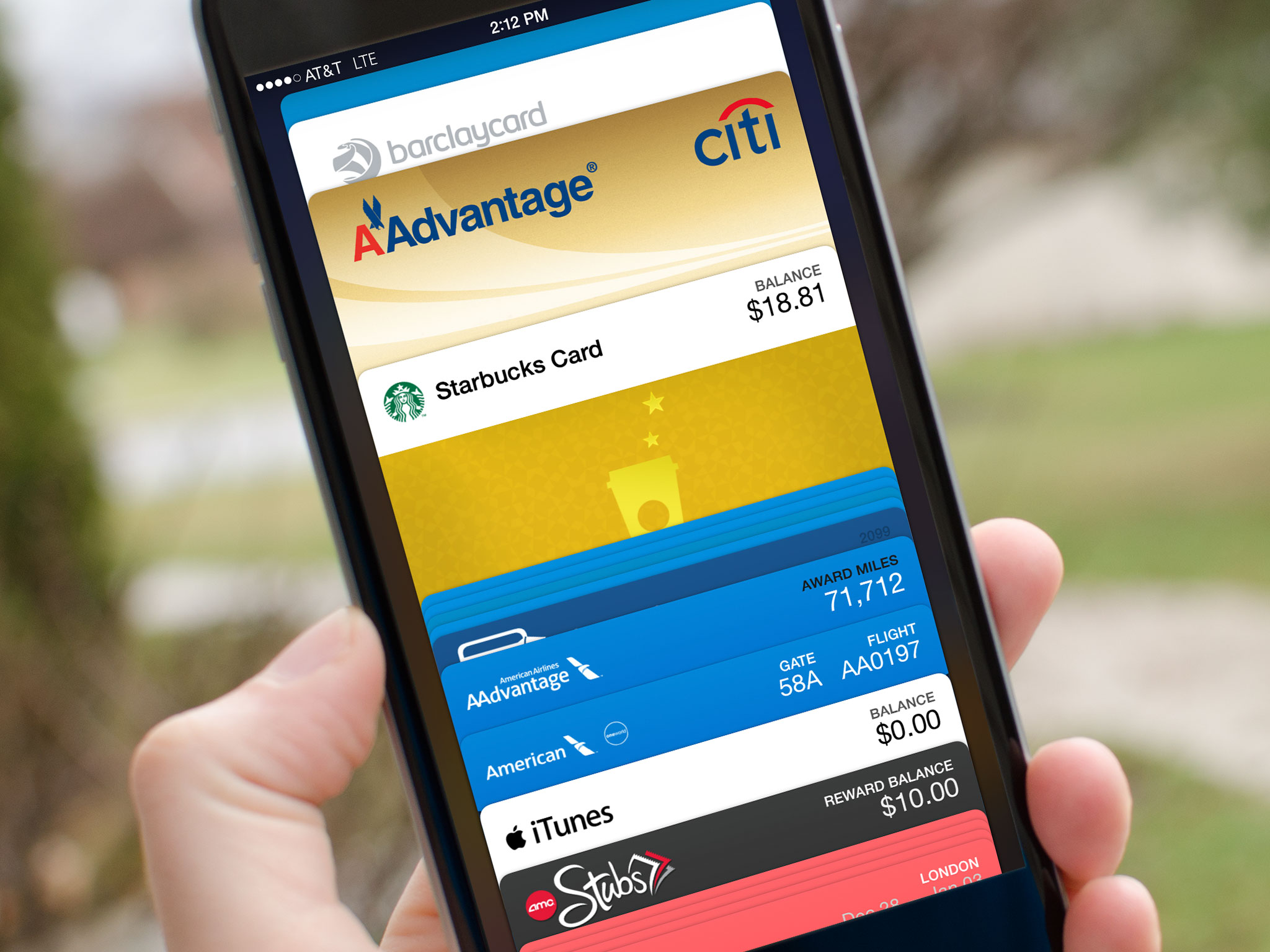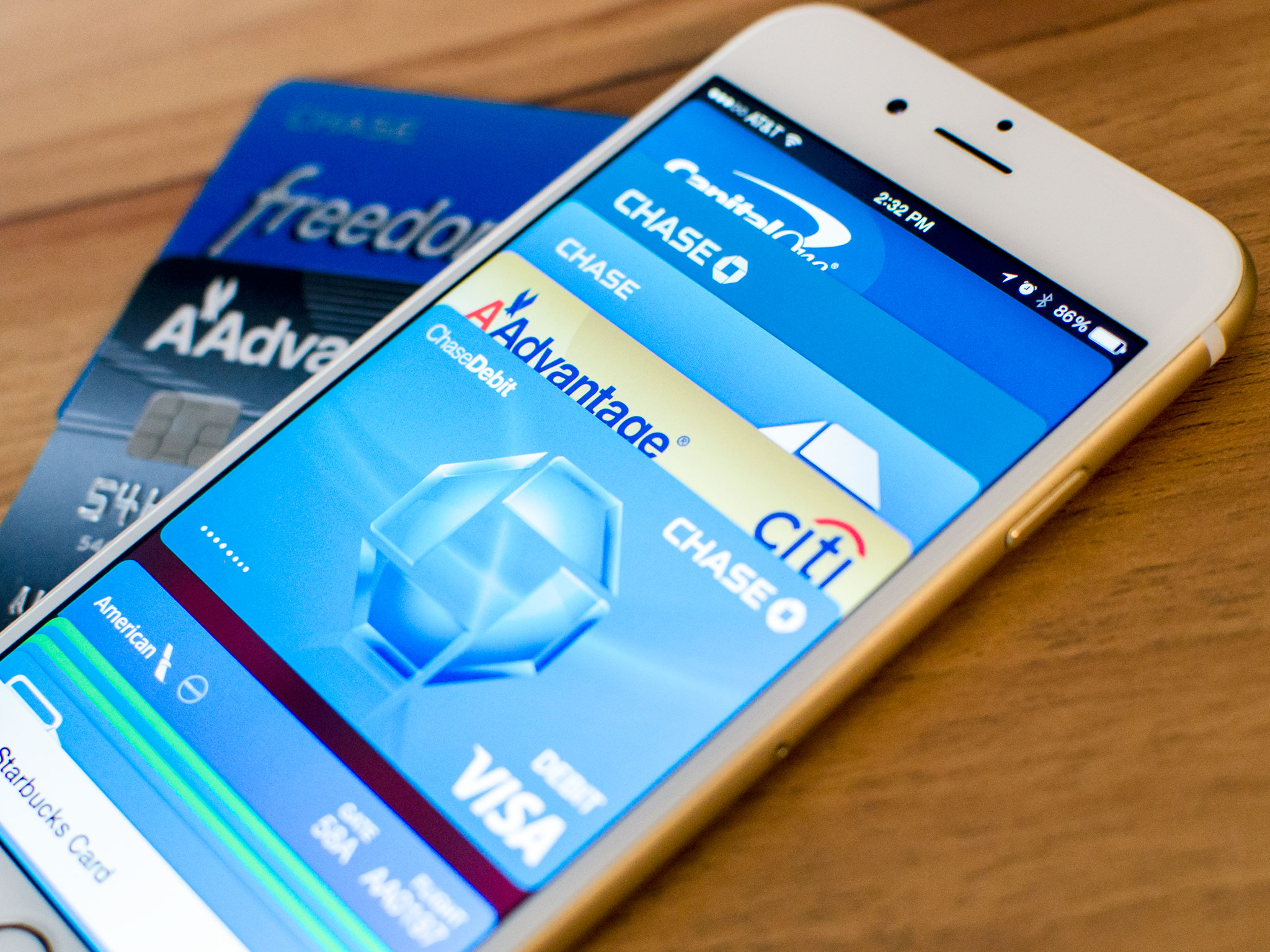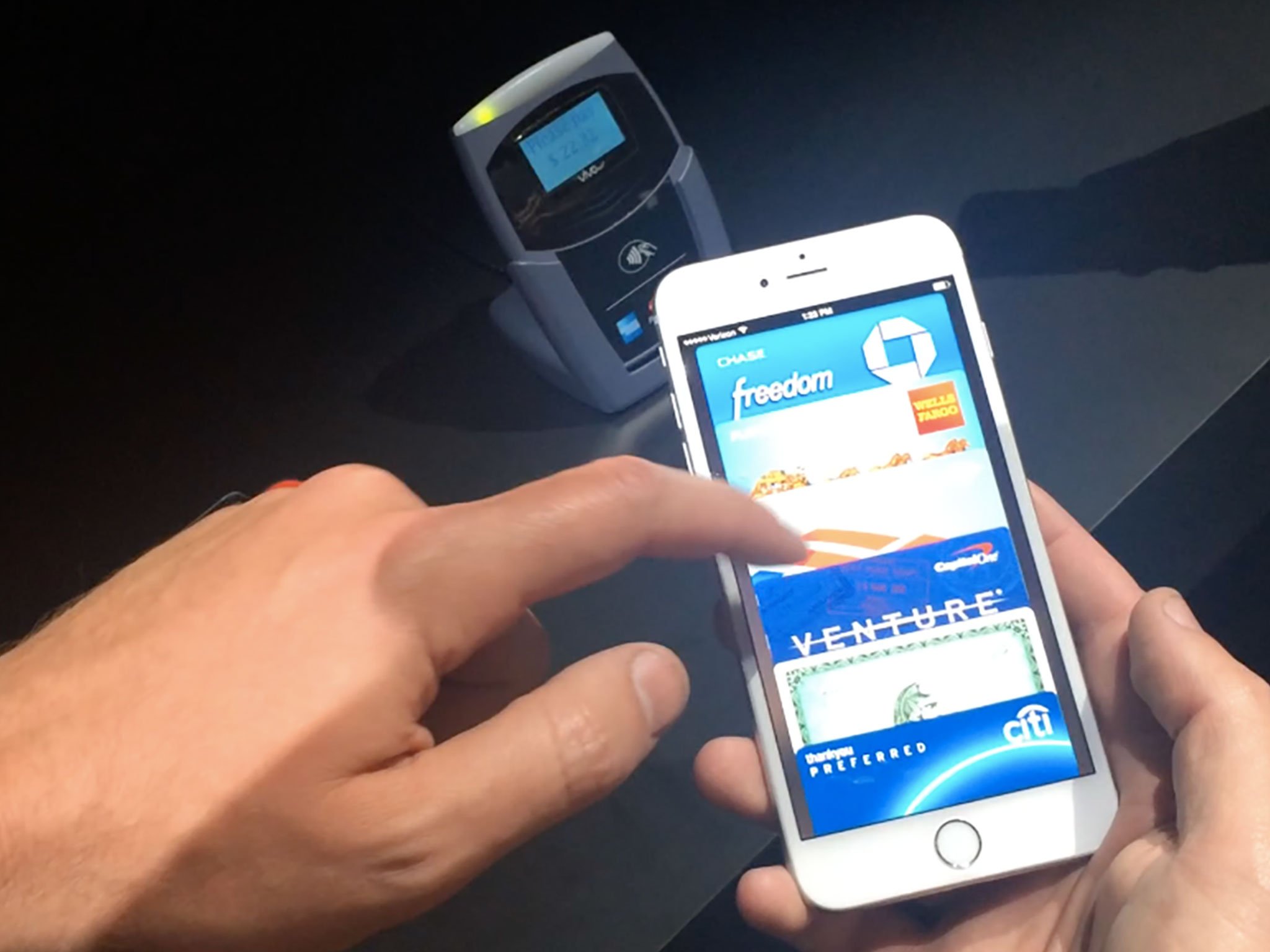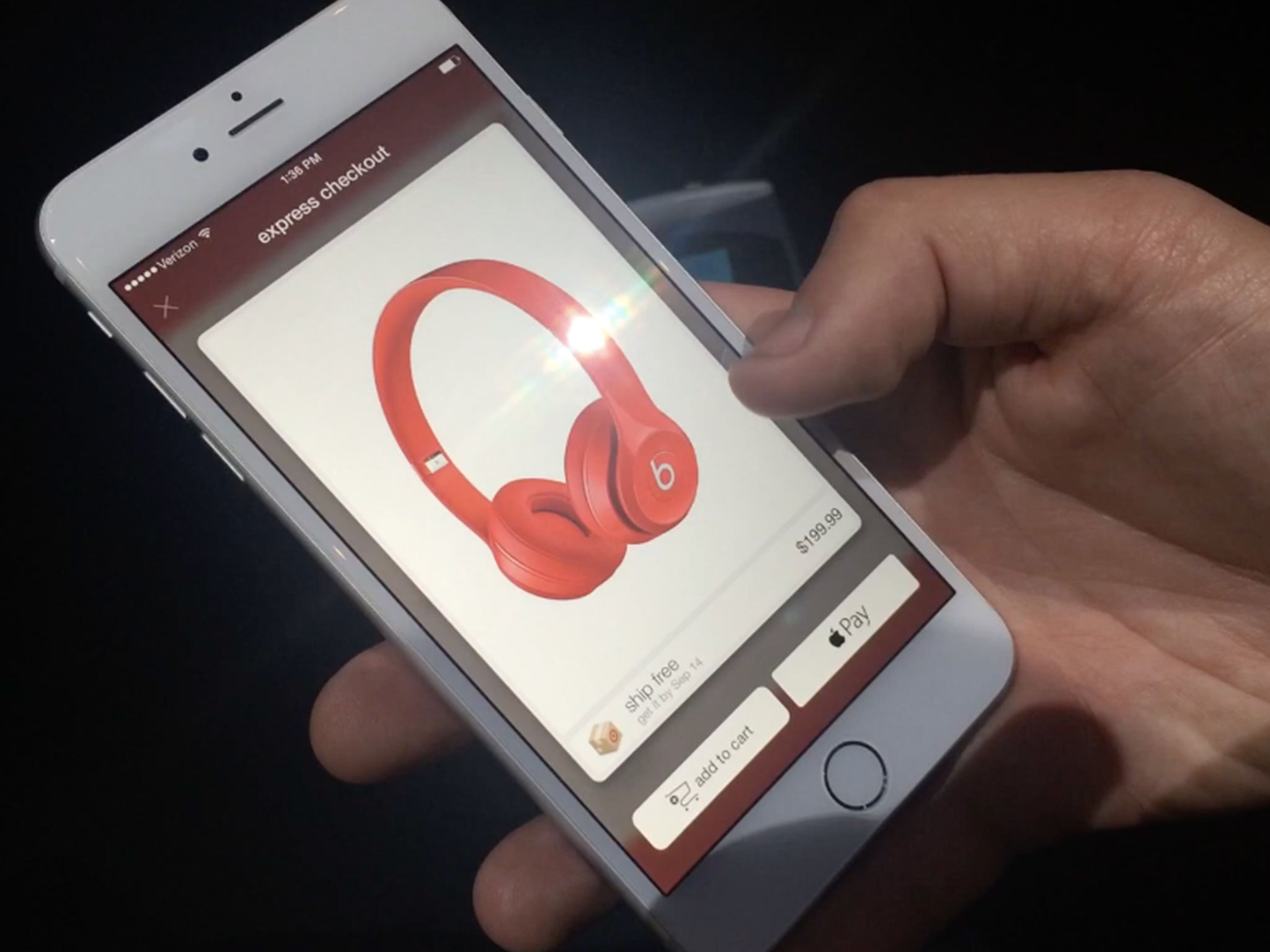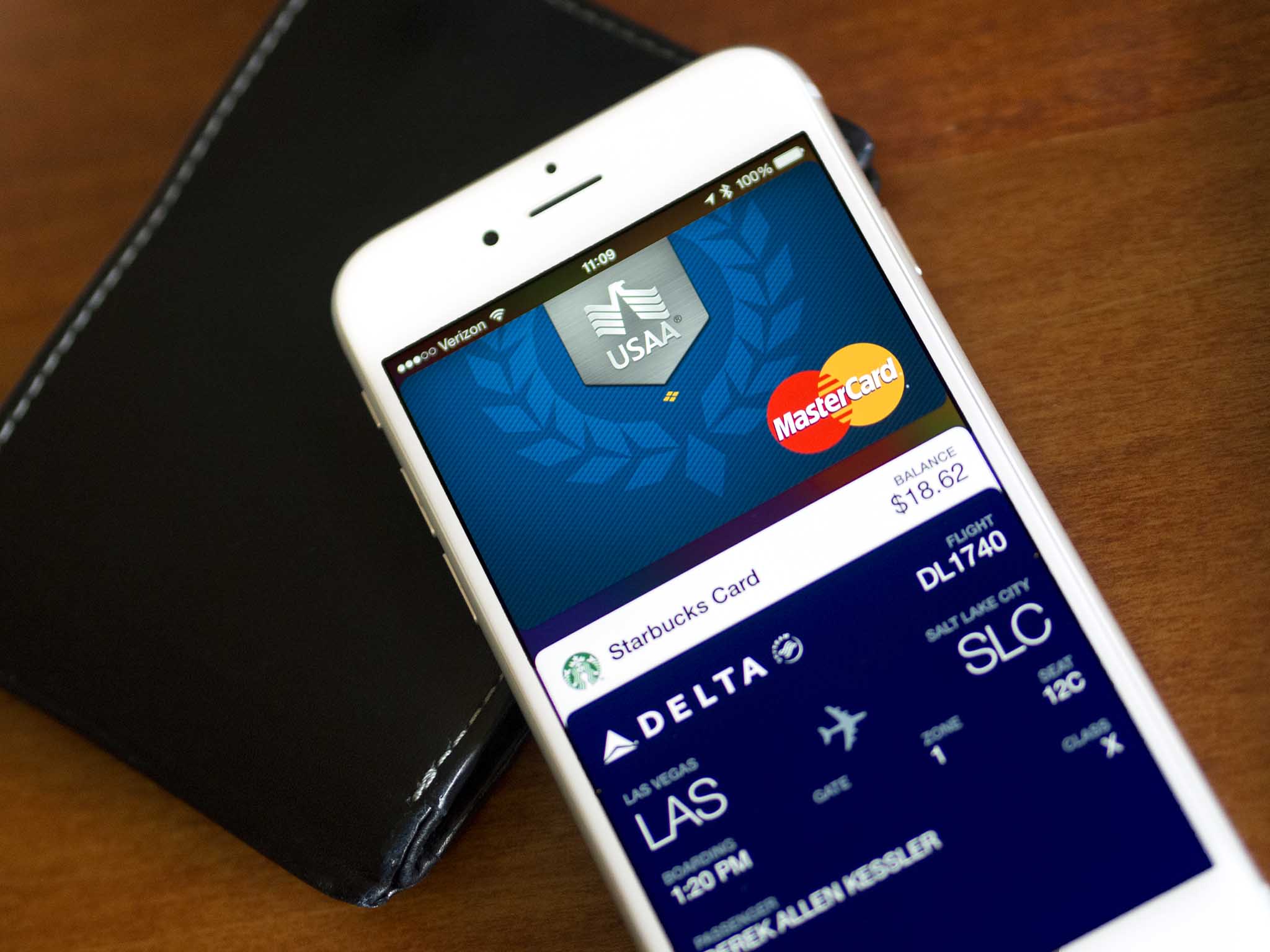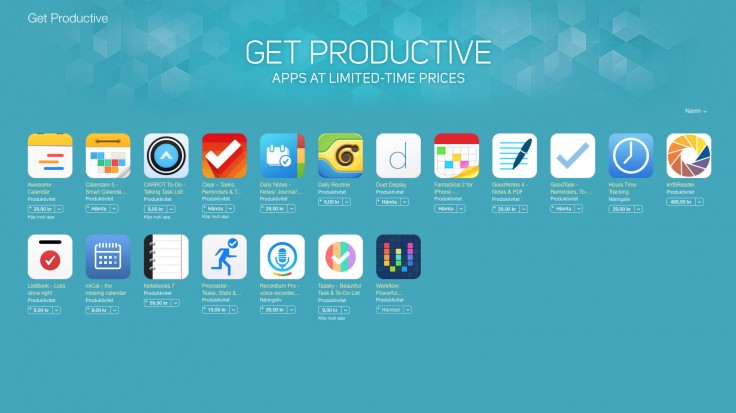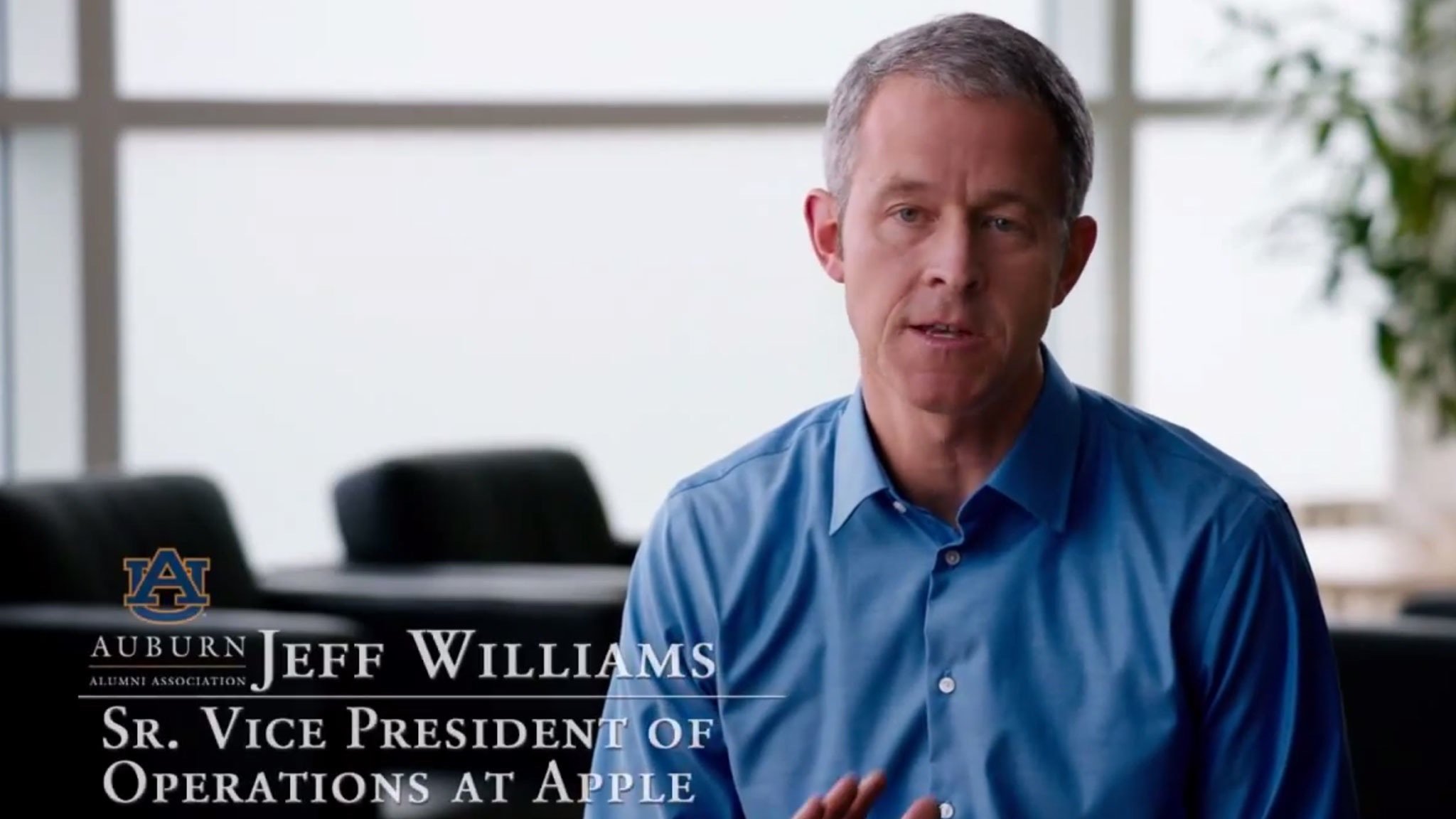Proposed tax holiday would make it easier for Apple to bring foreign earnings home
- jan
- 30
- Posted by Michael
- Posted in Okategoriserade
Two U.S. senators have sponsored a bill that would make it easier for companies like Apple to bring the cash they are keeping overseas into the United States. Currently, U.S. companies that repatriate their foreign earnings are taxed at 35%. The new b…
read moreNSFW: Hey developers, paying for coverage is a scam
- jan
- 30
- Posted by Michael
- Posted in Okategoriserade
NSFW is a weekly op-ed column in which I talk about whatever’s on my mind. Sometimes it’ll have something to do with the technology we cover here on iMore; sometimes it’ll be whatever pops into my head. Your questions, comments and observations are welcome.
It’ll be no surprise to you to read that I’m pitched on new products all the time. Every day I get dozens of email solicitations from developers, marketing and PR people to cover new products for iMore. And many of them have variations on this:
”How much will it cost for our product to be written about on iMore?”
The answer is: Nothing. We don’t take a dime to cover any product on iMore. In fact, even the suggestion that we would is horribly insulting to our sense of ethics. Unfortunately, not all web sites are so inclined.
The sad part of this is that developers asking to pay for editorial placement are doing so because they’re conditioned to do so. This is how some smaller sites work. They want money anywhere they can find it — ad revenue on the viewer side, and paid editorial placement on the developer side. And it’s a shitty way to do business.
We’ve heard a lot this past year about ”journalistic ethics.” Whether you’re a print publication or an online pub, there are a few basic guidelines that cover the operations of editorial departments which have to be followed if you have a snowball’s chance in hell of resembling anything to do with journalistic ethics. And at the very top of that list: Advertisers can’t influence or compromise editorial coverage. And paying for coverage does exactly that. At the very least, it gives the perception of it, which is just as bad, if not worse.
This is something that’s taught in every introductory ethics course in any journalism school around the world. Unfortunately, a lot of the operators of smaller blogs either haven’t gone to J-school or just don’t give a shit. And it smears the entire industry as a result.
No one running a blog can claim ignorance on this front — no one. I didn’t go to J-school. I learned how to be a journalist on the job. Despite that, ”separation of church [editorial] and state [advertising]” was something that I learned very early. In order for readers to trust your editorial voice, they have to trust that voice hasn’t been paid for by someone with an ulterior motive.
Obviously sites aren’t charities. We have expenses and families to feed. One of the chief ways many sites make money is to sell advertising space. Nothing wrong with that. It’s pretty crucial, though, that the business people handling the advertising aren’t the same as the people writing about the products.
What’s more, there should never be a point where a company tries to leverage that relationship to gain favor, editorially. They should never say ”I’ll pull my advertising unless I get a good review,” and they should never, ever say ”I’ll pay you to review my product.”
That’s what gets my goat about this so badly. For the most part, these are companies and products I’ve never heard of, and the first comment out of the gate is ”how much does a review cost?” It taints the entire relationship for me. I’m sure I’ve overlooked covering products that were probably pretty good, for exactly this reason.
Let me speak plainly: There is no quicker way for me to a) ignore your product and b) blacklist your company from further coverage than for you to ask me how much my editorial voice costs.
To be sure, the vast majority of the sites that you probably have bookmarked or linked in your RSS reader do not, under any circumstances, take money for editorial coverage, and have never done so.
iMore is certainly one of those.
Anyway, time for me to get off my soapbox. That is all.
![]()
IDC: Samsung fortfarande före Apple
- jan
- 30
- Posted by Michael
- Posted in Ekonomi/Bransch, iphone, iPhone 6, MacWorld, Mobiltelefon, Ut på Twitter
Apple Pay review: 3 months later
- jan
- 30
- Posted by Michael
- Posted in Okategoriserade
Apple Pay — or Pay — launched in October of 2014 as part of iOS 8.1. It enabled the NFC-based tap-to-pay system in the iPhone 6 and iPhone 6 Plus, and the online payment system in both iPhones 6 and the iPad mini 3 and iPad Air 2. While it hasn’t yet rolled out internationally, Apple Pay has expanded to more banks, retailers, and apps in the U.S. We went in-store with it at launch, but how’s Apple Pay doing now, some three months later?
Apple Pay and banks
 Peter: My bank was there on day one, and I had absolutely no problem signing up my debit card in Apple Pay. I know a lot of other people haven’t been as lucky. One of the few times I’ve been happy to be with my giant, monolithic, massively unfriendly and expensive bank.
Peter: My bank was there on day one, and I had absolutely no problem signing up my debit card in Apple Pay. I know a lot of other people haven’t been as lucky. One of the few times I’ve been happy to be with my giant, monolithic, massively unfriendly and expensive bank.
 Ally: I have lots of different cards in Apple Pay and for the most part I’ve had zero problem. Everything works as I’d expect it to. However, a month or so ago I restored my iPhone 6 Plus and since then I haven’t been able to get one of my cards added back. The recent iOS update that was supposed to address that particular Apple Pay issue unfortunately hasn’t worked for me either. Calls to my issuer haven’t helped either.
Ally: I have lots of different cards in Apple Pay and for the most part I’ve had zero problem. Everything works as I’d expect it to. However, a month or so ago I restored my iPhone 6 Plus and since then I haven’t been able to get one of my cards added back. The recent iOS update that was supposed to address that particular Apple Pay issue unfortunately hasn’t worked for me either. Calls to my issuer haven’t helped either.
 Ren: I’m with Peter — I was lucky in that my major debit and credit cards all supported Apple Pay at launch, and I’ve had no real problems with them. (Though the initial add process did require a couple of random steps, including sending confirmation codes to a phone number I haven’t had on file in four years.)
Ren: I’m with Peter — I was lucky in that my major debit and credit cards all supported Apple Pay at launch, and I’ve had no real problems with them. (Though the initial add process did require a couple of random steps, including sending confirmation codes to a phone number I haven’t had on file in four years.)
Apple Pay at retail
 Peter: I’ve used Apple Pay a precious few times and it’s worked out quite well, but I have to be frank: I don’t shop at most of the places it’s taken. The places I do shop most frequently, including my grocery store and my pharmacy, aren’t yet signed up. So Apple Pay has, for me anyway, been an interesting curiosity. But it really hasn’t moved into a daily use for me yet.
Peter: I’ve used Apple Pay a precious few times and it’s worked out quite well, but I have to be frank: I don’t shop at most of the places it’s taken. The places I do shop most frequently, including my grocery store and my pharmacy, aren’t yet signed up. So Apple Pay has, for me anyway, been an interesting curiosity. But it really hasn’t moved into a daily use for me yet.
 Ally: When actually using Apple Pay, the process is painless. Just tap and done. The only time I’ve found the process slightly odd is when using self checkouts. The ones are our local grocery stores are a little finicky and don’t always seem to activate tap payments. Other than that, the experience has been pleasant.
Ally: When actually using Apple Pay, the process is painless. Just tap and done. The only time I’ve found the process slightly odd is when using self checkouts. The ones are our local grocery stores are a little finicky and don’t always seem to activate tap payments. Other than that, the experience has been pleasant.
 Ren: I used Apple Pay a lot when it first launched, in part for novelty, but I’ve really grown to love using it. My pharmacy and three grocery stores in my area take it, and I keep on running into other places that take it. (For awhile, I’d tap my iPhone at any register that looked like it might take contactless payments… just in case.)
Ren: I used Apple Pay a lot when it first launched, in part for novelty, but I’ve really grown to love using it. My pharmacy and three grocery stores in my area take it, and I keep on running into other places that take it. (For awhile, I’d tap my iPhone at any register that looked like it might take contactless payments… just in case.)
Apple Pay in-apps
 Peter: I actually haven’t used Apple Pay in apps once. I admit I’m on a limited budget to begin with, so I don’t do a lot of in-app shopping anyway, but it really hasn’t come up for me even as a possibility.
Peter: I actually haven’t used Apple Pay in apps once. I admit I’m on a limited budget to begin with, so I don’t do a lot of in-app shopping anyway, but it really hasn’t come up for me even as a possibility.
 Ally: I’ve only used Apple Pay with the Apple Store app when purchasing a case for my iPhone 6 Plus. It was a heck of a lot easier than entering all my details or having to change them from what is in my iTunes account. I’m sure I’ll end up using it more and more as different merchants start supporting the functionality.
Ally: I’ve only used Apple Pay with the Apple Store app when purchasing a case for my iPhone 6 Plus. It was a heck of a lot easier than entering all my details or having to change them from what is in my iTunes account. I’m sure I’ll end up using it more and more as different merchants start supporting the functionality.
 Ren: I’ve actually started using Panera’s in-app Apple Pay to place advance orders rather than wait in line — it’s much faster, and there’s no hassle about finding a payment option to input into my iPhone, since my credit card info is already stored. (It’s also an easy way for my purchases to count toward Panera’s loyalty program, as in-store Apple Pay doesn’t register that you’re a member without flashing your MyPanera card.)
Ren: I’ve actually started using Panera’s in-app Apple Pay to place advance orders rather than wait in line — it’s much faster, and there’s no hassle about finding a payment option to input into my iPhone, since my credit card info is already stored. (It’s also an easy way for my purchases to count toward Panera’s loyalty program, as in-store Apple Pay doesn’t register that you’re a member without flashing your MyPanera card.)
I’ve used the Apple Store’s app to buy things while in the store, as well, but it feels a lot weirder to use than Panera’s or Target’s; I’m guessing that’s because I’m actually in the store, but not dealing with people.
Apple Pay evolution
 Rene: Canada! (You expected nothing less, and I would not disappoint!). Seriously, though. International rollout feels inevitable. So does support for loyalty programs. I don’t know if there would ever be Apple Point, redeemable for iTunes credit, but I’d love to my Lego VIP card in there. Also, there’s the whole world of consumer-to-consumer transactions to get into. People have been begging for a PayPal alternative for years. Maybe Apple Pay could be just that?
Rene: Canada! (You expected nothing less, and I would not disappoint!). Seriously, though. International rollout feels inevitable. So does support for loyalty programs. I don’t know if there would ever be Apple Point, redeemable for iTunes credit, but I’d love to my Lego VIP card in there. Also, there’s the whole world of consumer-to-consumer transactions to get into. People have been begging for a PayPal alternative for years. Maybe Apple Pay could be just that?
 Ren: Though I haven’t spent much time abroad in the last three months, I would love for Apple Pay to take hold in Canada and the UK; I’m planning trips to both in the near future, and it would be swell to not have to worry about my wallet while traveling.
Ren: Though I haven’t spent much time abroad in the last three months, I would love for Apple Pay to take hold in Canada and the UK; I’m planning trips to both in the near future, and it would be swell to not have to worry about my wallet while traveling.
And though I don’t think the company’s ”Year of Apple Pay” will be doomed without loyalty cards or frequent customer attachments, I’d really like to be able to connect things like my Panera card to my purchases there — right now, it’s easier to order in advance through the app than pay in-store with Apple Pay and then pull out my Panera card.
Finally, more merchants supporting it. I wish CurrentC would die in a fiery pit, but at the least, some of its supporters are aging out of their original exclusivity contracts — hopefully that means we’ll see retailers like Target (who already support Apple Pay in-app) using the in-store kiosks, as well.
 Peter: MOAR VENDORS. Apple Pay has already succeeded where other digital payment systems have failed, but it’s nothing approaching critical mass. Major retailers still don’t have support for Apple Pay, and many banks don’t either. It’s also a complete non-entity outside the United States.
Peter: MOAR VENDORS. Apple Pay has already succeeded where other digital payment systems have failed, but it’s nothing approaching critical mass. Major retailers still don’t have support for Apple Pay, and many banks don’t either. It’s also a complete non-entity outside the United States.
Bottom line
 Peter: Apple Pay is everything I wanted in a mobile payment system: Elegant, fast, secure. If Apple can get the entire world using it, more the better. In the interim, Apple Pay is still squarely a novelty for me. I use it whenever I can, but for what I’ve been spending money on since it was introduced, that’s not that much.
Peter: Apple Pay is everything I wanted in a mobile payment system: Elegant, fast, secure. If Apple can get the entire world using it, more the better. In the interim, Apple Pay is still squarely a novelty for me. I use it whenever I can, but for what I’ve been spending money on since it was introduced, that’s not that much.
 Rene: I share Tim Cook’s bullishness on the future of Apple Pay. It does so many things right that, given enough time, adoption, and propagation, I think it could fundamentally transform how I pay for things on a daily basis. It could end up being a bigger deal than even the current crop of devices because it’s not just another device — it’s another service for all devices.
Rene: I share Tim Cook’s bullishness on the future of Apple Pay. It does so many things right that, given enough time, adoption, and propagation, I think it could fundamentally transform how I pay for things on a daily basis. It could end up being a bigger deal than even the current crop of devices because it’s not just another device — it’s another service for all devices.
 Ren: Using Apple Pay is awesome and keeps me from pulling out my credit card all the time, but it’s not so widespread that I can just leave my wallet at home. I’m hoping 2015 is the year enough of my merchants begin accepting Apple Pay that I can consider actually going phone-only and saving some of that pocket space for, say, an extra battery for my iPhone. I also wouldn’t mind some sort of loyalty program integration. (Fingers crossed!)
Ren: Using Apple Pay is awesome and keeps me from pulling out my credit card all the time, but it’s not so widespread that I can just leave my wallet at home. I’m hoping 2015 is the year enough of my merchants begin accepting Apple Pay that I can consider actually going phone-only and saving some of that pocket space for, say, an extra battery for my iPhone. I also wouldn’t mind some sort of loyalty program integration. (Fingers crossed!)
 Ally: I love the idea of Apple Pay and what it offers. The only barrier is merchants adopting it within the United States. It’s kind of ironic since it’s only available in the the US yet our country is pathetically behind when it comes to NFC and payment technology in general. Let’s hope the next year or so changes that.
Ally: I love the idea of Apple Pay and what it offers. The only barrier is merchants adopting it within the United States. It’s kind of ironic since it’s only available in the the US yet our country is pathetically behind when it comes to NFC and payment technology in general. Let’s hope the next year or so changes that.
![]()
Microsoft släpper Outlook för IOS
- jan
- 30
- Posted by Michael
- Posted in App Store, Appar, Internet/Webbtjänster, iOS, iPad, iphone, MacWorld, Mjukvara, Mobilt, Mobilt/Handdator/Laptop, Teknik, Ut på Twitter


Office för Iphone och Ipad har funnits en tid, och nu kommer även mejlklienten Outlook till IOS.
Microsoft släpper Outlook för iOS
- jan
- 30
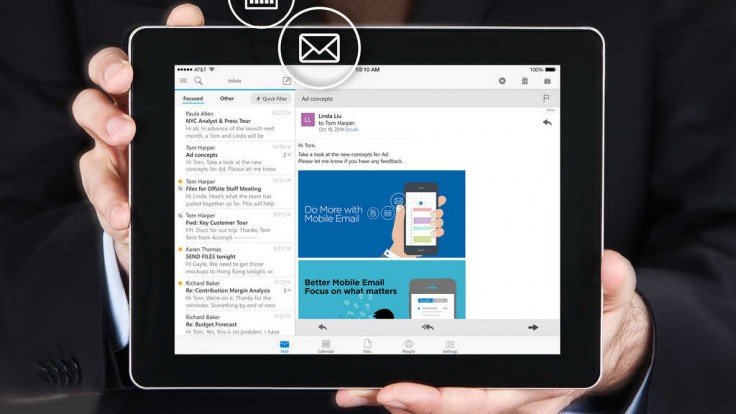
 Microsoft fortsätter lansera appar för iOS och den här gången är det e-postappen Outlook som…
Microsoft fortsätter lansera appar för iOS och den här gången är det e-postappen Outlook som…
Jeff Williams and the continued success of Apple’s ops team
- jan
- 30
- Posted by Michael
- Posted in Okategoriserade
Jeff Williams, senior vice president of operations at Apple, took over day-to-day leadership of the ops team following Tim Cook’s transition from Chief Operating Officer (COO) to Chief Executive Officer (CEO). Since then Apple has shipped a flabbergasting number of iPhones, a huge number of Macs and iPads, and started ramping up to ship the first batch of Apple Watches. To say Williams runs the best ops team in the business does him and them a disservice — No one else even comes close. That’s no dount why he’s getting some much-deserved attention following Apple’s blow-out Q1 2015 results. Neil Cybart, writing for Above Avalon:
One thing became abundantly clear after analyzing Apple’s recent earnings report: Jeff Williams is doing a phenomenal job. As senior vice president of Operations, Williams is tasked with making sure the Apple machine is well-oiled and in tip-top shape, not only capable of producing more than 100 million iOS devices in a quarter, but building flexibility into the system to handle annual hardware updates that would make most hardware companies quiver with fear.
John Gruber, writing for Daring Fireball:
First, in terms of iPhone operations and considering nothing else, Jeff Williams has clearly done an amazing job. Apple sold a record 74 million iPhones last quarter, and though the company doesn’t break that down by models for competitive reasons, everyone knows that a huge chunk of those were the brand-new iPhone 6 and 6 Plus. They were supply-constrained on both models, particularly the 6 Plus, but only by a few weeks. Operationally Apple did an incredible job meeting demand for iPhones — they sold more than ever but were less supply-constrained than in the last few launch quarters. For context, in 2008, Apple sold a total 10 million iPhones for the entire year. All credit to the hardware, software, and product marketing teams for the fact that 74 million people wanted to buy an iPhone last quarter. But the credit goes to Williams’s operations team that there were 74 million units available to sell.
There was a story, I believe passed along by Gruber, about how someone asked how the original iPad came to be, and the answer they got was Steve Jobs. When they asked how it came to cost only $500, the answer they got was Tim Cook. Today, Jeff Williams is running the Apple Watch team, and when it comes costing only $349, he’ll be a huge part of that answer.
Behind Tim Cook’s mantra of ”making the great products” is Apple’s ability to make customers believe they’re getting value far beyond the cost. Part of that value equation, now like then, is thanks to the ops team, and at a scale that dwarfs anything else we’ve ever seen before.
For that, Jeff Williams and his entire org deserves not only a ton of attention, but ton of credit as well.
![]()
Nu kan du köra Itunes i Notiscenter
- jan
- 30
- Posted by Michael
- Posted in iTunes, Mac OS X (generellt), Macintosh, MacWorld, Mjukvara, Teknik, Ut på Twitter


Apple släppte i går Itunes 12.1 som förutom buggfixar innehåller en ny widget för Notiscenter.
How to manage iCloud Drive syncing over cellular
- jan
- 30
- Posted by Michael
- Posted in Okategoriserade

If you store a lot of documents in iCloud Drive, and you’re on a limited data plan, you may not want apps moving large files around unless you’re on Wi-Fi. Cellular data use with iCloud Drive is nowhere nearly as intensive as streaming music or videos, but if you want to make sure not a bit goes by without your say so, you can manage it all in Settings.
How to turn cellular data on or off for iCloud Drive syncing
Launch the Settings app on your iPhone or iPad.
Tap on iCloud.
Tap on iCloud Drive.
Scroll all the way to the bottom and turn Off the option for Use Cellular Data.
Questions about iCloud Drive and cellular?
Let us know below.
…
Senaste inläggen
- Imessage drabbat av avbrott i natt
- Imessage drabbades av avbrott i natt
- Varning: IOS 17.5 kan återställa tidigare raderade foton
- Så länge använder kunder sina Ipad
- This updated fan favorite iPad accessory works with the latest models and the Apple Pencil Pro
Senaste kommentarer
Arkiv
- maj 2024
- april 2024
- mars 2024
- februari 2024
- januari 2024
- december 2023
- november 2023
- oktober 2023
- september 2023
- augusti 2023
- juli 2023
- juni 2023
- maj 2023
- april 2023
- mars 2023
- februari 2023
- januari 2023
- december 2022
- november 2022
- oktober 2022
- september 2022
- augusti 2022
- juli 2022
- juni 2022
- maj 2022
- april 2022
- mars 2022
- februari 2022
- april 2021
- mars 2021
- januari 2021
- december 2020
- november 2020
- oktober 2020
- september 2020
- augusti 2020
- juli 2020
- juni 2020
- maj 2020
- april 2020
- mars 2020
- februari 2020
- januari 2020
- december 2019
- november 2019
- oktober 2019
- september 2019
- augusti 2019
- juli 2019
- juni 2019
- maj 2019
- april 2019
- mars 2019
- februari 2019
- januari 2019
- december 2018
- november 2018
- oktober 2018
- september 2018
- augusti 2018
- juli 2018
- juni 2018
- maj 2018
- april 2018
- mars 2018
- februari 2018
- januari 2018
- december 2017
- november 2017
- oktober 2017
- september 2017
- augusti 2017
- juli 2017
- juni 2017
- maj 2017
- april 2017
- mars 2017
- februari 2017
- januari 2017
- december 2016
- november 2016
- oktober 2016
- september 2016
- augusti 2016
- juli 2016
- juni 2016
- maj 2016
- april 2016
- mars 2016
- februari 2016
- januari 2016
- december 2015
- november 2015
- oktober 2015
- september 2015
- augusti 2015
- juli 2015
- juni 2015
- maj 2015
- april 2015
- mars 2015
- februari 2015
- januari 2015
- december 2014
- november 2014
- oktober 2014
- september 2014
- augusti 2014
- juli 2014
- juni 2014
- maj 2014
- april 2014
- mars 2014
- februari 2014
- januari 2014
Kategorier
- –> Publicera på PFA löp
- (PRODUCT) RED
- 2015
- 25PP
- 2nd gen
- 32gb
- 3D Touch
- 3D-kamera
- 4k
- 64gb
- 9to5mac
- A10
- A9X
- Aaron Sorkin
- Accessories
- adapter
- AirPlay
- AirPods
- Aktiv
- Aktivitetsarmband
- Aktuellt
- Alfred
- AMOLED
- Android Wear
- Angela Ahrendts
- Ångerätt
- announcements
- Ansiktsigenkänning
- app
- App Store
- Appar
- Apple
- Apple Beta Software Program
- Apple Book
- Apple CarPlay
- Apple Event
- Apple iMac
- Apple Mac Mini
- Apple Macbook
- Apple MacBook Air
- Apple MacBook Pro
- Apple Macos
- Apple Maps
- Apple Music
- Apple Music Festival
- Apple Music Radio
- Apple Offer
- Apple Online Store
- Apple Park
- Apple Pay
- Apple Pencil
- Apple Podcast
- Apple Store
- Apple Store 3.3
- Apple TV
- apple tv 4
- Apple TV 4K
- Apple Watch
- Apple Watch 2
- Apple Watch 8
- Apple Watch 9
- Apple Watch Apps
- Apple Watch SE
- Apple Watch Series 2
- Apple Watch Sport
- Apple Watch Ultra
- AppleCare
- AppleTV
- Application
- Applications
- Apps
- AppStore
- Apptillägg
- Apptips
- AppTV
- April
- Arbetsminne
- armband
- Art Apps
- Återköp
- återvinning
- Åtgärdsalternativ
- atvflash
- Audio Apps
- Augmented REality
- Back-to-school
- Bakgrundsbilder
- BankId
- Barn
- Batteri
- batteriskal
- batteritid
- Beats
- Beats 1
- Beats Solo 2 Wireless
- Beats Solo2
- Bebis
- Beginner Tips
- Belkin
- Bendgate
- beta
- Beta 3
- betaversion
- betaversioner
- bilddagboken.se
- bilder
- bilhållare
- billboard
- Bioteknik
- Blendtec
- Bloomberg
- Bloons TD 5
- Bluelounge
- Bluetooth
- Böj
- Booking.com
- Borderlinx
- bose
- bugg
- Buggar
- Buggfixar
- Butik
- C More
- Calc 2M
- Camera
- Campus 2
- Canal Digital
- Carpool Karaoke
- Caseual
- Catalyst
- CES 2015
- Chassit
- Chip
- Chrome Remote Desktop
- Chromecast
- citrix
- clic 360
- CNBC
- Connect
- Cydia
- Dagens app
- Dagens tips
- Damm
- Danny Boyle
- Data
- datamängd
- Datorer
- Datortillbehör
- Datum
- Defense
- Dekaler
- Designed by Apple in California
- Developer
- Development
- Digital Inn
- Digital Touch
- Digitalbox
- DigiTimes
- Direkt
- Discover
- display
- DisplayMate
- Dive
- Docka
- Dräger 3000
- Dropbox
- Droples
- DxOMark
- E-post
- earpod
- EarPods
- Earth Day
- Eddie Cue
- eddy cue
- Educational Apps
- Ekonomi
- Ekonomi/Bransch
- El Capitan
- Elements
- ElevationLab
- Elgato Eve
- Elgato Eve Energy
- EM 2016
- Emoji
- emojis
- emoticons
- Enligt
- EU
- event
- Eventrykten
- EverythingApplePro
- Faceshift
- facetime
- Fäste
- Featured
- Features
- Feng
- Film / Tv-serier
- Filmer
- Filstorlek
- Finance Apps
- Finder For AirPods
- Finland
- FireCore
- Fitbit
- Fitness Accessories
- Fjärrstyr
- Flurry
- Födelsedag
- fodral
- Förboka
- Force Touch
- förhandsboka
- Första intryck
- Forumtipset
- foto
- FoU (Forskning och Utveckling)
- Fource Touch
- Foxconn
- FPS Games
- Framtid
- Fre Power
- Frontpage
- Fullt
- Fuse Chicken
- Fyra
- Gadgets
- Gagatsvart
- Gamereactor
- Games
- Gaming
- Gaming Chairs
- Gästkrönika
- General
- Gigaset
- Gitarr
- Glas
- GM
- Google Maps
- Google Now
- gratis
- grattis
- Guide
- Guider
- Guider & listor
- Guld
- hack
- Halebop
- hållare
- Hälsa
- Hårdvara
- HBO
- HBO Nordic
- Health
- Health and Fitness
- Health and Fitness Apps
- Hej Siri
- Helvetica Neue
- Hemelektronik
- Hemknapp
- Hemlarm
- Hermes
- Hitta min iphone
- Hjärta
- högtalare
- HomeKit
- HomePod
- hörlurar
- htc
- Hue
- Humor
- i
- I Am A Witness
- IBM
- iBolt
- iBomber
- iBook
- icar
- iCloud
- iCloud Drive
- iCloud Voicemail
- iCloud.com
- iDevices
- IDG Play
- idownloadblog
- iFixit
- ikea
- iKörkort
- iLife
- Illusion Labs
- iMac
- IMAP
- iMessage
- iMessages
- iMore Show
- Incipio
- InFuse
- Inspelning
- Instagram-flöde
- Instrument
- Intel
- Internet/Webbtjänster
- iOS
- iOS 10
- iOS 12
- iOS 17
- iOS 18
- iOS 5
- iOS 7
- iOS 8
- iOS 8 beta
- iOS 8.1.3
- iOS 8.2
- iOS 8.3
- iOS 8.4
- iOS 8.4.1
- iOS 9
- iOS 9 beta 4
- iOS 9.1
- iOS 9.1 beta 2
- iOS 9.2
- iOS 9.2.1
- iOS 9.3
- IOS Games
- ios uppdatering
- ios9
- iPad
- iPad Accessories
- iPad Air
- iPad Air 2
- iPad Air 3
- iPad Air 5
- iPad Apps
- iPad Mini
- iPad mini 4
- iPad Mini 6
- iPad mini retina
- iPad Pro
- iPados
- iphone
- iPhone 12
- iPhone 14
- iPhone 14 Pro
- iPhone 15
- iPhone 16
- iPhone 17
- iPhone 5
- iPhone 5S
- iPhone 5se
- iPhone 6
- iphone 6 plus
- iPhone 6c
- iPhone 6s
- iPhone 6S plus
- iPhone 7
- iPhone 7 display
- iPhone 7 Plus
- iPhone 7s
- iPhone Accessories
- iPhone Apps
- iPhone SE
- iphone x
- iPhone XS
- iPhone XS Max
- iPhone7
- iPhoneGuiden
- iPhoneguiden.se
- iPhones
- iPod
- iPod Nano
- iPod shuffle
- ipod touch
- iSight
- iTunes
- iWatch
- iWork
- iWork för iCloud beta
- Jailbreak
- James Corden
- Jämförande test
- Jämförelse
- Jet Black
- Jet White
- Jönssonligan
- Jony Ive
- Juice Pack
- Juridik
- Just mobile
- kalender
- kalkylator
- Kamera
- Kameratest
- Karriär/Utbildning
- Kartor
- Kevin Hart
- keynote
- Keynote 2016
- KGI
- KGI Security
- Kina
- Klassiskt läderspänne
- Kod
- Kollage
- koncept
- konceptbilder
- köpguide
- krasch
- Krascha iPhone
- Krönika
- Kvartalsrapport
- Laddhållare
- laddningsdocka
- Laddunderlägg
- läderloop
- lagar
- Lagring
- Lajka
- Länder
- lansering
- laserfokus
- Layout
- leather loop
- LG
- Liam
- Lifeproof
- Lightnigport
- lightning
- Linux
- LinX
- live
- Live GIF
- Live Photos
- Live-event
- Livsstil
- Ljud & Bild
- Logitech
- LOL
- Lösenkod
- Lösenkodlås
- Lovande spel
- LTE
- Luxe Edition
- M3
- M3TV
- Mac
- Mac App Store
- Mac Apps
- Mac Mini
- Mac OS
- Mac OS X
- Mac OS X (generellt)
- Mac OS X Snow Leopard
- Mac Pro
- Macbook
- Macbook Air
- Macbook Pro
- Macforum
- Macintosh
- macOS
- Macs
- MacWorld
- Made for Apple Watch
- magi
- Magic
- MagSafe
- Martin Hajek
- matematik
- Meddelanden
- Media Markt
- Medieproduktion
- Mediocre
- Messaging Apps
- Messenger
- MetaWatch
- Mfi
- Michael Fassbender
- microsoft
- Mikrofon
- Minecraft
- Ming-Chi Kuo
- miniräknare
- minne
- Mixer
- Mixning
- Mjukvara
- mobbning
- Mobile Content
- Mobilt
- Mobilt/Handdator/Laptop
- Mobiltelefon
- Mockup
- Mophie
- mors dag
- moto 360
- Motor
- MTV VMA
- multitasking
- Music
- Music Apps
- Music, Movies and TV
- Musik
- Musikmemon
- MW Expo 2008
- native union
- Nätverk
- Navigation Apps
- nedgradera
- Netatmo Welcome
- Netflix
- Netgear Arlo
- News
- Niantic
- Nike
- Nikkei
- Nintendo
- Nöje
- Norge
- Notis
- Notiscenter
- nya färger
- Nyfödd
- Nyheter
- Officeprogram
- Okategoriserade
- OLED
- omdöme
- Omsättning
- OS X
- OS X El Capitan
- OS X Mavericks
- OS X Yosemite
- Outlook
- Övrig mjukvara
- Övrigt
- PanGu
- papper
- patent
- PC
- pebble
- Pebble Smartwatch
- Pebble Steel
- Pebble Time
- Pebble Time Steel
- Persondatorer
- Petter Hegevall
- PewDiePie
- Philips
- Philips Hue
- Phones
- Photoshop
- Planet of the apps
- Plex
- Pluggar
- Plus
- Plusbox
- Podcast
- Podcast Apps
- Pokemon
- Pokemon Go
- Policy
- Porträttläge
- PP
- Pris
- priser
- problem
- Problems
- Productivity Apps
- Program
- Prylar & tillbehör
- Publik
- publik beta
- QuickTime
- räkenskapsår
- räkna
- ram
- RAM-minne
- Rapport/Undersökning/Trend
- Rea
- Reading Apps
- recension
- Red
- reklaamfilm
- reklam
- reklamfilm
- reklamfilmer
- rekord
- Rendering
- reparation
- Reportage
- Reptest
- ResearchKit
- Retro
- Review
- Ring
- Ringa
- Rocket Cars
- Rosa
- Rumors
- Rumours
- RunKeeper
- rykte
- Rykten
- Safir
- Säkerhet
- Säkerhetsbrist
- Samhälle/Politik
- samsung
- Samtal
- San Francisco
- SAP
- security
- Series 2
- Servrar
- Shigeru Miyamoto
- Sia
- Siri
- SJ Min resa
- skal
- Skal iPhone 6
- skal iPhone 6s
- skärm
- SKärmdump
- Skärmglas
- Skribent
- skribenter medarbetare
- Skriva ut
- skruvmejsel
- skydd
- Skyddsfilm
- Skype
- slice intelligence
- Smart
- smart hem
- Smart Home
- Smart Keyboard
- Smart klocka
- Smart Lights
- smartphone
- Smartwatch
- Snabbt
- Snapchat
- Social Apps
- Software
- Solo2
- sommar
- Sonos
- Sony
- soundtouch
- Space Marshals
- spår
- Speakers
- Special Event
- Spel
- Spelkonsol
- Spellistor
- Split Screen
- Split View
- Sport
- Sportband
- Sports Apps
- spotify
- Spring forward
- Statistik
- Steve Jobs
- Stickers
- Stockholm
- Stor iPhone
- Storlek
- Story Mode
- Strategy Games
- streama
- Streaming
- stresstest
- Ström
- Studentrabatt
- stylus
- Super Mario Run
- support
- Surf
- Surfplatta
- svenska
- sverige
- Sverigelansering
- Switch
- Systemstatus
- Systemutveckling
- tåg
- Taig
- Tangentbord
- Taptic Engine
- Tårta
- tät
- Tävling
- Taylor Swift
- Teknik
- tele 2
- Telefoner
- Telekom
- Telia
- Test
- Tid
- TikTok
- Tile
- tillbehör
- Tim Cook
- TIME
- TimeStand
- Tiny Umbrella
- Tips
- Toppnyhet IDG.se
- Touch ID
- TouchID
- tower defence
- trådlös laddning
- Trådlösa hörlurar
- trådlöst
- trailer
- Travel Apps
- Tre
- TrendForce
- TripAdvisor
- Trolleri
- trump
- TSMC
- Tum
- tv
- tvätta
- tvOS
- tvOS 9.2
- tvOS beta 2
- Tweak
- Typsnitt
- Ubytesprogram
- UE MegaBoom
- Unboxing
- Underhållning/Spel
- unidays
- United Daily News
- Unix
- Updates
- Uppdatera
- uppdatering
- Upplösning
- upptäckt
- USA
- Ut på Twitter
- utbyte
- utbytesprogram
- Utilities Apps
- Utlottning
- utrymme
- utvecklare
- varumärke
- Vatten
- Vattentålig
- vattentät
- vävt nylon
- Verktyg
- Viaplay
- Vibrator
- video
- Videoartiklar och webb-tv (M3/TW/CS)
- Villkor
- viloknapp
- Virtual Reality
- Virus
- visa
- Vision Pro
- VLC
- Volvo on call
- W1
- Waitrose
- Watch OS
- WatchOS
- WatchOS 2
- watchOS 2.0.1
- watchOS 2.2
- Webbtv (AppTV)
- wi-fi
- Wifi-samtal
- Windows
- Windows 8
- WWDC
- WWDC2015
- yalu
- Youtube
- Zlatan

